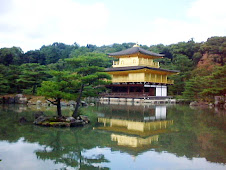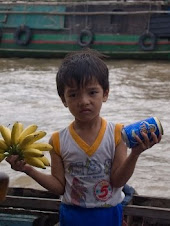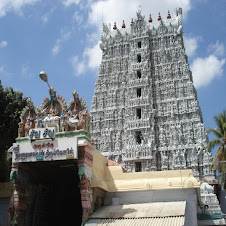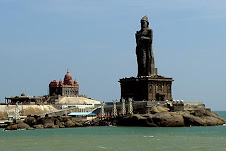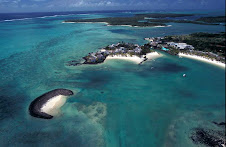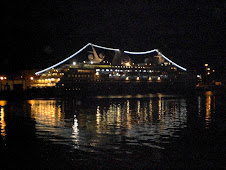Friday, September 18, 2009
Moroc
On arrival to Casablanca all that was in sight were shipyards and mountains of phosphorus exposed to the open air (in case you don’t know, phosphorus particulate matter is not something you want regularly inhaled by the population of your country’s largest city, but there it was regardless). To add to the negative image already painted by Morocco’s largest port, Semester at Sea said they hired a shuttle bus so that we didn’t have to risk the walk through Casablanca’s shady shipyards.
Though intimidating at first, Morocco turned out to be an amazing experience. I went on a trip arranged by Semester at Sea to Marrakech, Morocco’s most visited city, and into the Sahara Desert for a “camel trek” and overnight stay in a nomad tent. It was awesome, just at little unnerving at times and, for lack of a better word, crazy.
The first day in Morocco we went to the “souks” of Marrakech. These are little shops lined up close together in the old part of the city where locals sell crafts and foods, often to tourists like us. I was traveling with three friends of mine and in that moment I’m pretty sure they kept me from being ripped off and/or kidnapped. It was so overwhelming at first—there were people shouting at me in both French and English telling me to “just look,” motorcycles and donkey-drawn wagons whizzing by me in the tiny alleyways, and in every direction there were Moroccans, of whom we were told to always be extremely skeptical. [In the pre-port lecture they said always have your purse on the side away from the street so people in cars couldn’t snatch it as they drive by and they said to never hold plastic bags only by the handles because the plastic could be ripped right out of your fingers.]
We had been told that the locals would really try to rip us off in the souks and that they would barter down to a third of the price they originally suggested, but I still had no idea of the value of anything they were selling. Was a Moroccan teapot really worth 300 dirham as the guy had repeatedly told me was a “very good deal” in his broken English? Clearly no, but being from the US I was not used to negotiating the price of goods I buy. In this hectic situation on the first day, I decided not to buy anything and I am very glad I didn’t. After observing some more experienced barterers and with a little bit of practice I later got a much nicer Moroccan teapot for only 150 dirham (originally suggested to me at a price of 700 dirham). By the last day I was a pro barterer and was getting good deals on souvenirs left and right. Once I had the know-how bartering became quite a fun little game.
On the second day we made the eight hour drive out of Marrakech to the edge of the Sahara Desert. Sleeping with scorpions far away from civilization and any modern medical technology was more comforting than the unnerving drive out there. On the drive we had to pass through the High Atlas Mountains, which are not little Pocono-size hills, on roads that were built quite a long time ago seemingly without any regulatory agency checking up on their safety. There were a few moments when we’d be zooming around a narrow turn, another truck would suddenly appear, and everyone on the bus would gasp as our driver jolted the bus towards the rocky face beside us. After one close-call the tour guide had stopped talking and then two minutes later, without addressing our near death experience, he resumed discussing Islam in Morocco. I regularly found myself contemplating, “okay, if we fell off this edge and I held on reallyyy tight, what are the chances I would survive?” Most of the time I reasoned it wouldn’t even be worth trying to hold on. I’m really not kidding about how intense this drive was though, one of the Life Long Learners even started to cry because she was so afraid. Still, once we arrived safely we gave credit to our driver because he did a pretty good job considering the circumstances.
When we finally reached the Sahara I couldn’t help but notice its resemblance to the Mojave Desert of California. I had been expecting huge white sand dunes but I guess you have to go a lot farther for that—we saw a sign that said “52 days to Timbuktu.” I think that meant by camel, though I’m not entirely sure. I wondered how many people really make the 52 day drive/ride to literally the middle of West Africa/the Sahara Desert. Still, the less-intense desert was a great time. Camel riding was awesome but really a lot like being on a very calm, patient horse. Once we got to our campsite we enjoyed traditional Moroccan cuisine and had time to relax, watch the sunset, go looking for scorpions with blacklights (for some reason they glow neon blue under blacklights), and lay on the rocky sand looking at the stars for over an hour. That may have been my favorite part—there were more stars than I’ve ever seen, so many that I couldn’t even make out any constellations. I had never really spotted the Milky Way before but it was unmistakable out in the Sahara. And I saw five shooting stars in such a short time. It was just so cool. My friends and I couldn’t help but say “I can’t believe we’re in the Sahara Desert right now.” I think we’ll be uttering similar sentiments many times in the next three months.
After getting back to Casablanca I had a field trip with my Sustainable Development class to the local Coca Cola factory. It was pretty much your standard factory, but it was really cool to have an opportunity to go with a class to see what we’re talking about first hand, and to get to talk to some seemingly important business executives. After trying some of Coke’s Moroccan products I toured around the souks of Casablanca with a pack of strong Semester at Sea guys as my body guards. I was later very glad I had brought those guys along. My “extended family” on the ship (one of the nurses and her fifteen year old daughter) had been navigating the same souks when they were confronted by a local waving a kitchen knife around. Luckily they were wearing their money belt (as we all do, really cool, I know), because the man just ran off with their camera bag and not their passports, credit cards, and cash too. Needless to say they were shaken up but crime is a reality you have to face when traveling in such poor countries, and they were very glad to be back on the ship safe and with their passports.
Now we’re back into classes which isn’t too bad. Though being in the countries having such new experiences is always amazing, it’s still nice every time we have to come back to the ship which really feels like a home to us now. And as good as the Moroccan cuisine was we were definitely ready for some standard “American” food. [I have to admit, on the last day in Morocco a friend and I snuck away to grab some of the local Pizza Hut.] In addition to enjoying the American food here on the ship I am now enjoying my downtime taking afternoon naps; sunbathing on the seventh deck; playing cards, scrabble, and mafia with friends; and watching the Disney movie channel which is usually the only one of our five channels that has anything entertaining on it.
In just three days we’ll be in Ghana! I’m not sure what to expect but I know that Ghana is straight up West Africa so it should be interesting. Wish me luck!
svc
Thursday, September 10, 2009
Espana
I am back aboard the MV Explorer after four days in our first port of Spain! Though it’s disappointing to have to leave already it’s about time I catch up on my sleep. Spaniard’s definitely know how to party… no one in southern Spain sleeps until 6:00 am and when you have to wake up to catch a bus at 9:00 this makes for a long day. The Spanish guest lecturer we had onboard our ship suggests that perhaps this is the reason for his country’s relative economic inefficiency but this makes Spain such a lively place. It seemed to me that the lives of Spaniards are much more focused on being social than are our lives. I’ll tell you a little about that later.
Our ship docked in the little city of Cadiz in southwest Spain. To me, the coolest thing about Cadiz is its history. Cadiz is the oldest city in western Europe—it was founded 3,000 years ago by the Venetians. Since then it has been ruled by the Romans as well as several Islamic, Jewish, and Christian empires. It’s said that Cadiz was founded by Hercules himself; images of the Greek god can be found in artwork throughout the city. Cadiz accumulated immense wealth in the 16th century because, for a time, it was the main port for trade between Spain and the New World. Because the city is on a peninsula surrounded by high sea walls created hundreds of years ago to protect the prosperous city from invaders, Cadiz is also the only city in Spain that never fell to Napoleon. Sorry to bore you all with the history lesson but I just thought it was amazing that Cadiz has been around for so long and has been through so much yet it still remains a lively, functioning city. Another piece of the history that was shocking to me was the fact that people still live in these houses and buildings that are 300 to 700 years old. I mean, people probably died of the bubonic plague in those houses.
Some friends and I also went to Seville which is an absolutely gorgeous city inland about an hour from Cadiz. There we saw the third largest cathedral in the world, the oldest palace in the world that is still in use by a royal family, and the final resting place of Christopher Columbus (I’ve never seen a more elegant crypt). Not just in Seville, but in all of the cities we visited I was amazed by the beauty of the churches but even more than that I was amazed at the lack of religion in a place where people had once spent such vast amounts of money to erect and adorn these beautiful churches. We visited a huge old cathedral—one that even had the bodies of two five hundred year old saints displayed in it—on a Sunday morning! Apparently there was only one mass a week there and it was held in the afternoon. For a country in which 80% of its citizens consider themselves Catholics, Spain seemed to lack religious presence everywhere other than in its grand old churches which have truly become religious relicts.
Though the Spaniards lacked religious tradition, there was so much culture elsewhere. One of my favorite experiences was when some friends and I visited Ronda, a city high in the mountains of southern Spain. It was another beautiful old city with tiny roads that only Volkswagen Beetle size cars could drive through. There were many grand, several hundred year old houses crowded together on this mountaintop because it was where many of the wealthiest families in Spain, and even France and England, had their summer homes as it was known to have the cleanest air in Europe. Back in the day the best way to try to live long lives and be healthy was to have (1) proper nutrition and (2) fresh air so this is why they headed all the way to Ronda. And I digress again. Anyway, we just so happened to be in Ronda during the week they celebrate their fellow Rondian who created the sport of bullfighting several hundred years ago. To celebrate, of course, they have bull fighting events. Our tour guide said the worst ticket would cost at least eighty euros. I guess people pay that for an Eagles ticket, but it wasn’t the price that amazed me—it was how much of an event the bullfight was. We didn’t get to go inside the arena itself but we saw all of the Rondians, young and old, dressed in their best for the event. Young women rode to the arena in carriages pulled by lavishly decorated horses. The young women themselves looked so elegant. They wore long beautiful dresses and lace veils that our tour guide said were often two hundred years old—passed from mother to daughter—and could cost up to one hundred thousand euros for the very best ones. I was so surprised and fascinated by all of this because I had never previously thought of a Western country having such rich, distinct traditions.
One of my favorite aspects of Spanish culture is how important their meals are. It’s not just about great food, it’s so much about spending time with family [and in our case, friends]. One night some friends and I went out to a nice restaurant on the river in Seville for my roommate’s birthday. We got there around 8:00 and stayed until 11:30. No one bothered us to leave, in fact, after three and a half hours we finally had to ask for the check.
Drinking and partying also seemed to be important to Spainards, as I have previously mentioned. In order to be good travelers and really immerse ourselves in the culture my friends and I tried to do as the Spaniards do and went to some bars. I had “cerveza” down, but communicating our wants for other drinks with my broken Spanish required a bit more creativity. In trying to order my friend her whiskey sour we ended up with a shot of whiskey, a glass of ice, and a bottle of lemon Fanta. Still, it did the trick and we had a few good laughs with the bar tender.
And now, as if it wasn’t difficult enough trying to communicate in Spain where I actually knew a bit of the local language, we’re off to Morocco—a country whose official language was unknown to me until our pre-port lecture this afternoon. [F.y.i. They speak Arabic. Who knew.] It’s sad that now we have one less stop to see but I am so excited for what still is to come—cultures that will be even more different from our own. When we wake up tomorrow we will be in our first African country! And it should be something else--we’ve been told that us women need to cover up and that none of us should eat in public because it’s disrespectful to the 99% of Moroccans who are Muslims and are fasting for Ramadan. I’m going to need to brush up on my Islamic customs!
Well I need to get that rest before I embark on new adventures! I’ll be sure to write back soon to tell you all about Morocco!
Se amo!
svc
Wednesday, September 2, 2009
At Sea!
I’m currently writing from the MV Explorer as we travel east towards Cadiz, Spain. We’ve traveled about a thousand nautical miles since Nova Scotia and have another 1,700 or so to go before we reach our next destination.
The closest point of land is a mere 455 nautical miles away—we are absolutely in the middle of nowhere. Yesterday I saw the first sign of life other than us as a cargo ship passed in the distance. Let me tell you, it was a huge deal. We were in the middle of class when someone spotted it and everyone immediately got up and ran to the windows and starred at it as if we were five year old kids who’d never seen a ship before.
With that said, it’s an awesome experience to live aboard a ship. [We are often corrected for calling the ship a “boat” because this offends the captain and crew—they command a grand ship not just a little boat.] We’re lucky enough to be on a huge 25,000 ton ship that was built only eight years ago specifically for the Semester at Sea program. It has seven decks complete with two luxurious dining halls, a library, a computer lab, ten classrooms, a basketball court, a gym, a spa, a pool, a bar, a “campus” store, and other great facilities.
Though all the common areas in the ship are extremely nice I can’t say our cabins are as high class. My roommate and I joke that our room is a closet they converted to living quarters. We’re on the inside without a window so when you wake up it’s impossible to know whether it is 5:00 in the morning or noon. Still, it’s really not awful—we have our own bathroom and everything we really need. I guess that’s just the price you pay for living aboard a traveling vessel.
Even though we have everything you’d need at a normal college campus it’s impossible to forget that we live aboard a ship. The most shocking part of the experience for me thus far is how much the ship sways back and forth. The seas are relatively calm and the MV Explorer is pretty large but there’s never a time when you can’t feel the movement. I can’t really describe feeling but you feel as if you’re going to tip over in your chair yet your glass of water doesn’t slide from the table. It can be quite entertaining to watch groups of people walking down the hallway as they simultaneously move from side to side and sometimes collide with walls.
Our ship is home to almost 900 people. There are about 550 students from all over the US, around 40 professors, another 15 or so staff, the families of the faculty and staff, 30 or 40 “life-long-learners” [who are mostly retired people interested in learning and helping us to learn so they pay to join our voyage], and about 200 crew members. It’s great getting to interact with the professors’ young children and the friendly and wise life-long-learners who sit in on our classes and eat with us. The crew are also great. They are truly from all over the world: the UK, China, the Netherlands, the Philippines, Mexico, the Caribbean, and many many more places. [Our Captain is British--I always imagine that our ship would be on fire or sinking and we'd still hear his calm, clear British accent over the loud speaker. Before I met him I thought that all of the announcements were recordings.] Every day our beds are made, our rooms cleaned, our food served to us, and our plates are cleared by the friendly and seeming very happy crew. Life is good.
Really everyone I've encountered thus far has been awesome. All of the students are extremely friendly, outgoing people. The first night I flew into Canada I ran into other SAS students at the airport (it was pretty clear which kids were students as there aren’t many people that regularly fly into in the little city of Halifax). Immediately we were all talking and a few Dartmouth kids let me crash with them in their hotel so I didn’t have to look around for a place to stay at midnight. The next morning I was outside of the hotel waiting for a cab when a family from Geneseo, NY spotted me with my two huge duffel bags on wheels and offered to give me a ride to the ship since they were taking their daughter there as well. This open kindness amongst people is so common onboard. The life-long-learners really want to get to know students, as I said before crew are always cheery, the professors and their families are extremely glad to be here (it’s actually harder for a professor to get accepted to the program than it is for students), and obviously all of the students are stoked on traveling around the world with five hundred kids their age. As we sit out on the back dock watching the sunset and chatting we can’t help but occasionally throw in “I can’t believe we’re here right now.” It really is the coolest trip—we’re all so excited to be here even though for the time being “here” is precisely in the middle of nowhere.
There’s so much to tell you all about this extremely new experience for me but so much I need to get to (yes, somehow they keep us busy even though we’re isolated to a single environment in the middle of the open ocean). I’ll be sure to write again soon when I get a chance and when I have some more new and exciting things to tell you all about.
Thanks for following!
svc
Thursday, August 27, 2009
Pre-Voyage
Hey friends and family!
I set up this blog to keep you all updated on what I’m up to this Fall as I circumnavigate the globe on my Semester at Sea voyage!
For those of you who don’t know much about what I’m doing, this Fall I am studying abroad in a rather unique way. The University of Virginia has a program called “Semester at Sea” on which you travel around the world (literally) on a large ship with 700 other students and faculty. Yes, we take real classes and actually do school work but we also have the time we’re docked in each port city to ourselves to explore the different countries.
I’m not really the blogging-type but it’s going to be difficult [and expensive] for me to contact any of you individually while abroad so I figured a blog would be the best and easiest way to update all of you at once. I’m sure I’ll be really busy but I’m going to try to keep this blog as up-to-date as possible. Also, if you need to contact me or just want to say hello the best way would be via e-mail (sarahvancleve@gmail.com).
My Fall 2009 voyage is planned as follows:
- Depart Halifax, Canada on August 28th
- Cadiz, Spain
- Casablanca, Morocco + Camel Riding in the Sahara!
- Accra, Ghana + Togo and Benin
- Cape Town, South Africa + Safari near Johannesburg!
- Port Louis, Mauritius
- Chennai, India
- Ho Chi Min City, Vietnam + the Mekong Delta
- Hong Kong, Beijing, and Shanghai, China
- Yokohama, Tokyo, and Kobe, Japan
- Oahu and the Big Island, Hawaii
- Arrive in San Diego on December 14th
- Then back to the East Coast for less than two weeks before snowboard season begins in Mammoth, CA!
Obviously there’s not much to tell you all at this point. Everything is packed and ready to go. I fly up to Halifax this evening, board the ship tomorrow, and then start the trek across the Atlantic. Of course last minute anxiety is kicking in--have I packed everything I need? what if my roommate is awful? is everyone on the ship going to get seasick when that hurricane traveling up the east coast hits us?--but I know that I have the most important things (passport, visas, credit cards, and the best immunity to exotic diseases that the developed world can supply) so I'm confident that everything will work out and I'm extremely excited to start this once-in-a-lifetime trip.
Well, I'm sure I'll have more exciting news once I've actually been “at sea” and in other countries but I hope you all get a chance every once in a while to check out what I’m doing this Fall.
Check back soon!
svc
